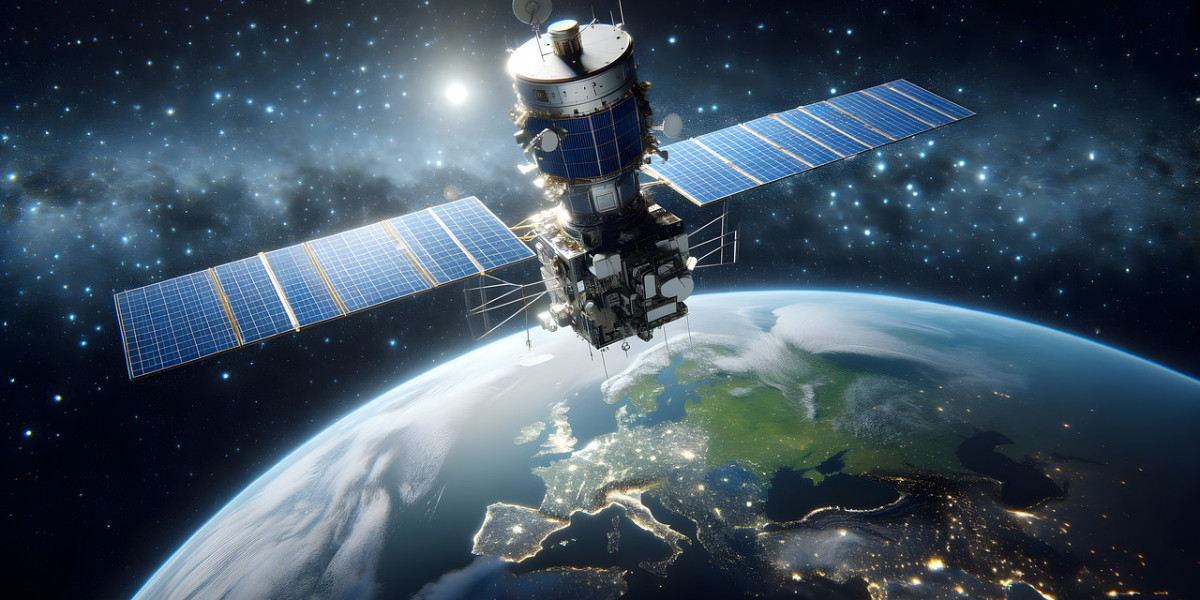The emergence of artificial intelligence (AI) in space technologies is redefining the capabilities of small satellites. In the rapidly evolving small satellite market, AI integration has become a pivotal trend, accelerating automation, improving data analysis, and enabling smart decision-making in orbit. As AI technologies mature, they are transforming satellites from passive data collectors into intelligent space systems capable of real-time insights and autonomous functions.
This shift marks a significant evolution in satellite design and mission execution, opening new possibilities for Earth observation, defense, climate monitoring, and telecommunications.
The Role of AI in Small Satellites
Small satellites have traditionally relied on ground stations for data processing and operational commands. However, the integration of AI is shifting this model. With onboard machine learning algorithms, satellites can now process large datasets in space, reducing the need to transmit raw data back to Earth.
This not only conserves bandwidth but also allows satellites to respond to dynamic conditions immediately. For instance, an AI-enabled Earth observation satellite can detect and flag natural disasters like wildfires or floods in real time, enabling faster response and improved mission outcomes.
Key Trends Driving AI Adoption
1. Edge Computing in Orbit
One of the most prominent trends is the rise of edge computing, where satellites perform AI-powered data analysis directly onboard. This is especially beneficial in missions where rapid decision-making is critical.
By using AI to pre-filter and compress useful data, small satellites reduce latency and optimize bandwidth usage. This allows for more efficient use of satellite resources and improves overall mission performance.
2. Predictive Maintenance and Self-Diagnostics
AI is also being used to enable predictive maintenance systems onboard small satellites. These algorithms monitor satellite health by analyzing telemetry data in real time and predicting possible component failures.
This capability helps extend the satellite’s lifespan, reduce operational costs, and minimize downtime. Satellites equipped with self-diagnostic tools can autonomously initiate recovery protocols, increasing mission resilience.
3. Autonomous Navigation and Collision Avoidance
As the number of small satellites in low Earth orbit (LEO) increases, collision avoidance is becoming more important. AI-based navigation systems are now being integrated to help satellites detect potential collision threats and autonomously adjust their orbits.
This form of intelligent autonomy reduces the reliance on human operators and speeds up response times in congested orbital environments. It also improves compliance with evolving space traffic management protocols.
4. AI for Real-Time Earth Observation
AI-powered image recognition and data analytics are transforming Earth observation missions. Small satellites can now identify changes in terrain, urban growth, deforestation, or water levels without waiting for ground-based analysis.
These real-time insights support industries like agriculture, insurance, disaster management, and environmental monitoring. Machine learning models can be trained to recognize specific patterns and anomalies, allowing satellites to adapt to mission goals dynamically.
Benefits of AI in Small Satellite Systems
The integration of AI into small satellites provides a wide range of operational and commercial advantages:
Faster decision-making: Real-time processing allows for immediate action in critical scenarios.
Reduced data overload: AI filters out irrelevant information, reducing the burden on ground stations.
Increased autonomy: Satellites can operate independently for longer durations with minimal ground support.
Improved efficiency: Optimized resource usage extends mission duration and enhances satellite performance.
Customizable applications: AI can be tailored to specific missions or industries, making satellites more versatile.
These benefits are essential for commercial, defense, and scientific missions that demand agility, accuracy, and speed.
Challenges and Considerations
Despite its potential, AI integration in small satellites comes with challenges:
Limited onboard resources: Processing power and energy availability are constrained on small platforms.
Reliability in space: AI systems must operate in extreme conditions, including radiation and temperature variations.
Training data limitations: High-quality datasets are needed to train accurate AI models, which may be mission-specific.
Cybersecurity risks: As autonomy increases, so does the risk of AI systems being targeted by malicious actors.
Overcoming these challenges requires careful design, robust testing, and collaboration across aerospace, AI, and cybersecurity domains.
Market Outlook and Future Innovations
The small satellite industry is rapidly investing in AI R&D to create smarter, more adaptive spacecraft. Future trends are expected to include:
Collaborative AI constellations: Multiple AI-enabled satellites working together to perform complex tasks.
On-orbit re-training: Satellites capable of updating AI models in space based on new mission parameters.
Integration with ground-based AI ecosystems: Seamless communication between satellite AI and terrestrial analytics platforms.
AI-optimized mission planning: Dynamic scheduling and resource allocation driven by real-time AI assessments.
These innovations will push the boundaries of what small satellites can achieve, further solidifying their role in commercial and strategic space initiatives.
Conclusion
AI is not just an add-on for the small satellite market—it is a transformative force that is reshaping how missions are conceived, executed, and monetized. From autonomous navigation to intelligent image analysis, AI empowers small satellites to become more efficient, responsive, and commercially valuable.
As demand for real-time data and autonomous space operations grows, AI integration will continue to be a cornerstone of the small satellite industry’s evolution. Businesses, governments, and innovators who embrace this trend early will be best positioned to lead in the next chapter of space technology.







